Part II [Round-Table Discussion]
Centralization of Ethics Committees
Introduction
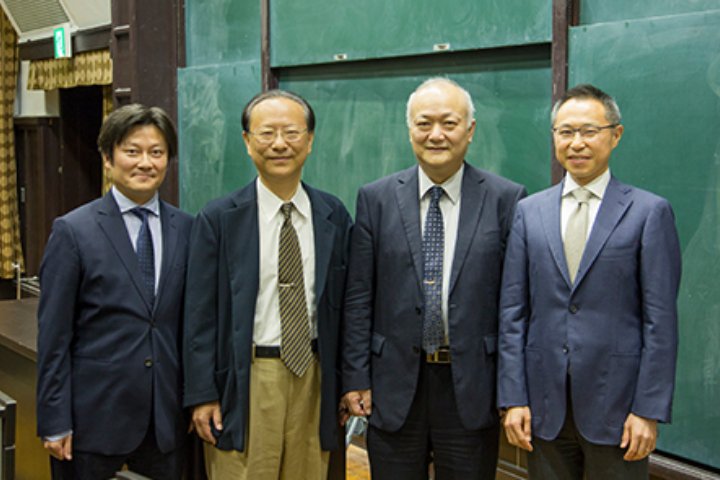
At the Office for Human Research Studies, Faculty of Medicine, the University of Tokyo, we study the latest trend revolving around research ethics and conduct interviews with specialists from various industries to examine the future of research ethics.
As Part II of the series, we gathered a panel of experts involved in research ethics committees at Japanese universities to discuss the centralization of ethics committees.
Participants *Honorifics omitted
Panelists:
Yoichi Yamamoto, Head of Academic Clinical Research Center, Department of Medical Innovation, Osaka University Hospital
Sosuke Iwae, Director of Research Ethics Support Department, Clinical Research Support Center, University of Miyazaki Hospital
Akira Akabayashi, Deputy Director of Office for Human Research Studies, Faculty of Medicine, the University of Tokyo
Coordinator:
Yuzaburo Uetake, Director General of the Ethics Committee, Office for Human Research Studies, Faculty of Medicine, the University of Tokyo
Observer:
Takuya Watanabe, Office for Human Research Studies, Faculty of Medicine, the University of Tokyo
1.Why the Debate for Centralization Now?
Objective of the Round-Table Discussion
Uetake:
Historical Background
Uetake:
Why is there a growing debate over central ethics committees now in the first place?
Akabayashi:
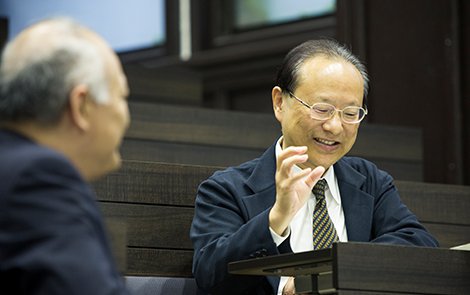
I had worked as the chairman of the ethics committee at Kyoto University Hospital for a few years since 2000. There was already the concept of central ethics committees at that time.
Central ethics committees play a central role among ethics committees that are set up at research institutions. Centralizing the control can deliver a variety of advantages, including improving the quality of review and expediting the start of joint research projects by preventing delays caused by multiple reviews by multiple committees.
This trend has accelerated in the last few years, most likely in direct response to academic research misconduct extensively covered by the media. What is your take on this, Dr. Yamamoto?
Yamamoto:
I think it all started with the revised ethical guidelines for clinical research* that was put into effect about 10 years ago.
Osaka University set up a department supporting clinical research around that time. I think Japan as a country has started to steer in the direction to actively and carefully reflect on the importance of research ethics.
*Revised ethical guidelines for clinical research: Refers to the amendments made in 2008 (announced in July 2008, enforced in April 2009) to the “Ethical Guidelines for Clinical Research” that were implemented in 2003. The revision took place with the objective of further improving research ethics and protecting the participants. Detailed guidelines were added to cover five areas, such as reinforcing ethics committees and securing a suitable enforcement system.
Akabayashi:
I agree. The debate regarding central ethics committees has also intensified around that time.
Uetake:
What do you think, Dr. Iwae?
Iwae:
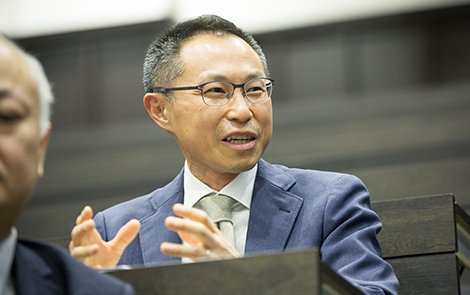
I didn’t get involved in what I do now until a few years later, around 2015, so I am not familiar with how things were when it started. However, my impression is that the system for central ethics committees mentioned in the “Guidelines for Clinical Research” and “Guidelines for Epidemiological Research” that were put into effect around 2015 focused on efficiency rather than improving the quality of review. It was designed so that national universities such as the University of Tokyo, Osaka University and University of Miyazaki could act as a collective review board that operated on behalf of small institutions without ethics committees or research entities with poorly functioning ethics committees.
Uetake:
I see. Adding to what Dr. Iwae just said about “collective reviews,” I think it is often unclear whether the centralization is for conducting a collective review for multiple institutions or for improving the quality in terms of ensuring impartiality, integrity and neutrality.
The University of Tokyo maintains the stance to stay detached from hospitals for the sake of being fair, neutral and impartial. It will be interesting to see in which direction Japan as a country will be heading. Dr. Akabayashi, what do you think?
2.Future of Central Ethics Committees
Akabayashi:
First of all, I agree with what Dr. Iwae said earlier and believe the primary interest for a collective review system is to improve efficiency.
To maintain integrity, neutrality and impartiality as Dr. Uetake mentioned, some countries such as United Kingdom have set up ethics committees outside the hospitals. Even in cases in which medical institutions have their own review boards, it is possible to ensure impartiality, integrity and neutrality by keeping the system transparent through the participation of external board members, including people without scientific expertise.
Yamamoto:
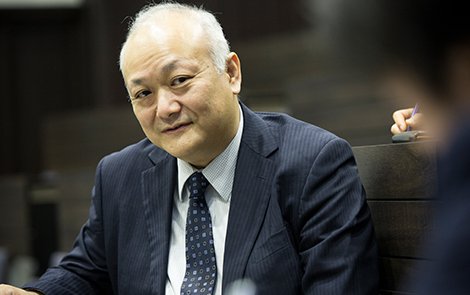
In other words, they are either IRBs (Institutional Review Boards) located within institutions or independent RECs (Research Ethics Committees). Even with IRBs, it is possible to maintain neutrality by bringing in third parties. However, there are limitations, in my opinion. For example, for high-risk intervention research, I think it would be useful to have an external organization conduct the review to maximize neutrality.
※IRB=Institutional Review Board 施設内審査委員会
※REC= Research Ethics Committee 倫理審査委員会
Uetake:
Dr. Iwae, what is your take on this?
Iwae:
I think it is sufficient to utilize internal committees for low-risk studies such as observational research that only involves data analysis and cases in which the investigator can assume the responsibility. However, there are limitations with IRBs in research that goes beyond the scope of the investigator’s responsibility, as in intervention research like Dr. Yamamoto mentioned, where the possibilities of causing direct harm to subjects cannot be totally eliminated.
Uetake:
It seems like the general consensus is that high-risk studies such as those done by corporations should be reviewed by third parties.
3.Pros and Cons of Central Research Ethics Committees
Uetake:
How about the advantages and disadvantages of centralization?
Yamamoto:
The greatest disadvantage would be the fact that it could highlight the disparity in terms of readiness. It would not be an issue if each institution is prepared but if ill-equipped institutions are asked to be part of a central committee, could they perform up to the standard? Some may think that there should be no problem as long as the researchers demonstrate a level of excellence. However, researchers are humans, not super heroes. That’s why I believe institutions should support and oversee the research. I think it’s very dangerous to proceed with centralization without considering such argument.
Iwae:
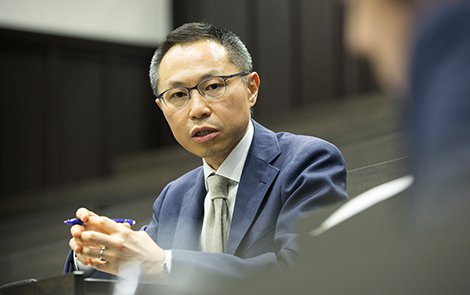
The advantages include increased efficiency and reducing the overall workload. The disadvantage is decline in quality, which is basically the same as what Dr. Yamamoto said. Could institutions that are poorly equipped in terms of staff and competencewhich holds true for University of Miyazaki still ensure the same high quality after suddenly being the subject of centralization…?
Akabayashi:
There hasn’t been much talk regarding how much to follow-up after approval by an ethics committee. We cannot ignore the fact that there may be organizations that find a loophole in the system and take advantage of the central ethics committee’s seal of approval to proceed with an unreasonable experiment on patients.
Uetake:
We can say that another disadvantage is that the central organization could end up with a huge administrative burden. The success of this system heavily relies on the operational improvement of research institutions regardless of size and scale. Therefore, unless the research institutions are well qualified, the central review board playing the key role might be left with the extra work of overseeing the research itself in addition to providing the ethics review.
Yamamoto:
I think that depends on the division of responsibility. However, even if the review is conducted by a central committee, there is still the question of whether the research implementing entities are performing up to the standards….
Akabayashi:
I think the foundation is yet to be built.
Uetake:
You think it is too soon?
Akabayashi:
I’m just saying that there are necessary steps that need to be taken beforehand.
Iwae:
The fact is, central ethics committees are expected to perform too many roles. There are numbers of issues at hand, but the unspoken agreement is that things will take care of themselves once it gets going.
Akabayashi:
That is definitely an illusion (laughs). The government guidelines specify that a case gets approved as long as the head of the institution gives a go-ahead, but it does not go that smoothly on site.
Iwae:
It is just the entrance.
Akabayashi:
Yes, just getting one foot into the entrance.
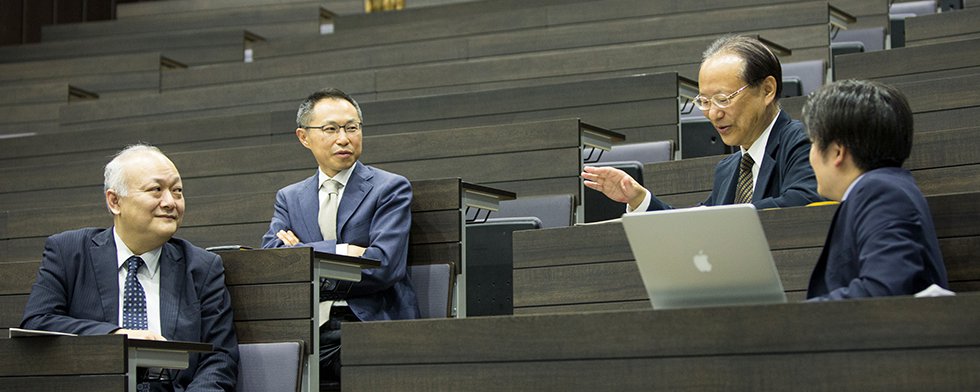
4.International Trends
Uetake:
What is it like around the world? Dr. Yamamoto, you have visited many international sites. Would you care to comment?
Yamamoto:
In Europe, neutral RECs play the central role in the review system. However, their quality is not necessarily first rate. Perhaps centralization could hinder access to information from the sites.
In the U.S., a non-profit accrediting body named AAHRPP* leads the way in the field of research ethics. Their accreditation process involves checking the ethics committee, organization and the research staff. The evaluation is very thorough, and they even randomly conduct interviews with the researchers. They do a respectable job in the sense that they take on an educational approach that helps institutions do better, instead of punishing them for things that need improvement. They are committed to ensure the protection of human research participants without relying on the government.
*AAHRPP (Association for the Accreditation of Human Research Protection Programs, Inc.): An independent association that works with clinical research organizations to promote the protection of research participants through the accreditation of institutions with human research programs that meet the standards required by the American government.
Uetake:
What is it like in other parts of Asia?
Yamamoto:
Taiwan has been tinkering with the idea of a central ethics committee for quite some time. They have settled on a balanced system which is not entirely centralized but incorporates reviews from various institutions. We can refer to it as a hybrid system.
Uetake:
In what areas do you think Japan can learn from other countries?
Yamamoto:

In other countries, people working at the administrative level are exemplary. This is not to say that Japanese administrative workers need to work harder. However, I have the impression that their counterparts in other countries have more of a professional mannerism and a strong sense of aspiration. In Japan, the tendency is to look at administrative positions as non-specialists and unfortunately it is difficult to find those that actively work with strong professionalism.
Iwae:
I agree. The ethics review process in Japan entails compliance checks more so than a professional review, making it more of a clerical task. For institutions, being ethical means you do not deviate from what the guidelines say. I think it is more important to protect the research participants than scrutinizing whether the guidelines are followed strictly.
Akabayashi:
Guidelines are just guidelines, not the law.
However, you cannot get funding unless you follow the guidelines, so it is an important element for researchers. That’s probably why the reviews are more focused on adhering to the guidelines instead of ensuring a high level of protection for research participants for which the review process was originally intended.
5.Funding and the Administrative Structure
Uetake:
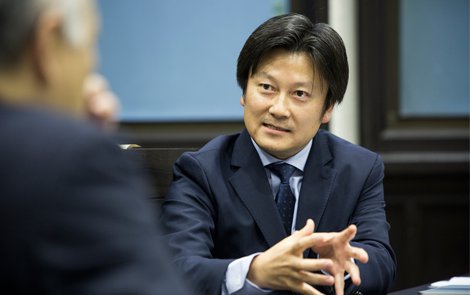
The question about money inevitably arises when organizations try to do a professional job. Administrative and labor costs are usually covered by the universities’ operating income, public funding and review fees. However, the money is very tight when you consider how much is expected. The Japanese government has suggested substantially raising the review fee to cover the administrative costs. For example, it proposes charging 500,000 to 1,000,000 yen per case for reviews by a certified clinical research review committee, but doubts remain over whether such high price is justifiable.
The bulk of the expenses is accounted for by labor. The cost is significantly different between medical and administrative staff working at the office. I’ve heard that there are more medical workers at the office at Osaka University. Is that true?
Yamamoto:
Osaka University has had more medical staff right from the beginning, but due to cost constraints, we have started to have administrators perform tasks that do not require technical skills. After three to five years of experience, administrative workers become capable of doing work that requires some level of expertise. Most of them can even check the paperwork for observational research.
Iwae:
At our place, administrative workers check the applications for ethics review. As for data management, which falls in the same area of research support but requires more medical expertise, the checks are done by those we refer to as “super administrators.” They have more experience and are more familiar with clinical trials at hospitals. We have one doctor that works as a consultant in research design, but no medical staff at the office.
Uetake:
Why are there fewer medical staff?
Iwae:
We are in the countryside, so it’s hard to find help in this line of work. Of course, there is also the issue with pay….
Yamamoto:
I think it’s difficult even in the city (laughs).
Uetake:
I see. It is important to have the resources. Specifically, what measures are taken by universities to manage financially?
Yamamoto:
Osaka University has set up a billing system, which was the first in Japan. We work with organizations that pay application fees that range from 40,000 to 120,000 yen per research, which includes observational research. This income adds up at the end of the year, enough to cover the costs of labor, such as the payroll for staff working in the research participant protection office. However, once you consider the system management expenses and repair costs, this is not enough so we have other sources, like public funding from AMED (Japan Agency for Medical Research and Development), funding from the Faculty of Medicine and income from clinical trials, to help cover the expenses.
Akabayashi:
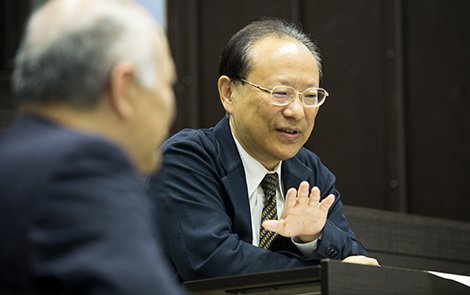
I truly think Osaka University had the foresight to have Dr. Yamamoto join soon after the guideline revision to create the Department of Medical Innovation. Also, the fact that the Faculty of Medicine decided to invest with the aim of actively doing more clinical research was huge.
Uetake:
What is it like at University of Miyazaki?
Iwae:
We have an in-house system so unfortunately we cannot charge.
Yamamoto:
Osaka University has set up the first billing system but there is much to be discussed in terms of how much to charge. Of course, it is important to charge a substantial amount from businesses, but what would be the reasonable price tag for doctor-led research? Institutions in Taiwan only charge a few thousand yen at the most and there is no charge in Europe as it is government-run.
Uetake:
What is it like in the U.S.?
Yamamoto:
My impression is that they have a well-balanced system since they receive applications from both businesses and public research institutions.
Uetake:
I see. That way they do not overburden the researchers.
Yamamoto:
That is correct.
6.Importance of Education
Uetake:
In order to enhance the quality of review by ethics committees, I think it is extremely important to educate researchers and specialists about ethically sound research. However, the system for e-learning on this topic seems rather unconsolidated.
Osaka University has its own system called CROCO (Clinical Research Online Professional Certification Program at Osaka University) and the University of Tokyo utilizes a system called CREDITS (Clinical Research Education and Interactive Training System) in collaboration with University Hospital Clinical Trial Alliance. There are many other e-learning platforms available, including CITI (Collaborative Institutional Training Initiative) Japan which is offered by Shinshu University and funded by the Ministry of Education, Culture, Sports, Science and Technology. I’ve heard that AMED (Japan Agency for Medical Research and Development) is also developing a new education system.
Such complexity in the educational system could cause major issues. e-learning may work well with continued education, but I think it is necessary to come up with an integrated web-based training system to teach the basics. Dr. Yamamoto, what do you think?
Yamamoto:
I have a slightly different perspective. The optimal style of education at universities is one that is offered at laboratories and classrooms, providing a place to let students and researchers gather any time, ask questions and attend classes. The purpose of e-learning is to emulate that in a setting outside traditional classrooms. Universities have their own on-site educational structure, so I think it’s reasonable to offer a web-based system in accordance with each structure.
Uetake:
So, you think it’s okay to have multiple options as long as the system is working. Dr. Iwae, what is your take on this?
Iwae:
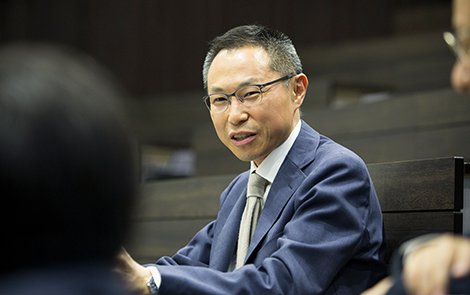
I think education should be based on OJT (on-the-job training). Training those interested in ethics support should involve inspecting submitted applications and coming up with modifications if necessary. That is the best way to learn the guidelines and become familiar with the basics of research ethics. Also, researchers who wish to be trained can actually learn many things by writing applications. In other words, I think learning at the workplace is the most effective way for both ethics support staff and researchers.
As for e-learning, I think it’s useful to have a comprehensive learning experience, but I’m concerned that it could lose substance by letting students pass after taking a few tests at the end of the session.
Uetake:
I see. Because the work at ethics committees could cover a variety of fields, from observational research to invasive interventional studies and regenerative medicine, there is the question of whether it is appropriate to train everyone under the same curriculum. The same applies for administrative staff.
However, there is the issue of efficiency, so maybe the best way is to learn all the fundamentals through web-based courses and then later follow-up with the technical specifics through individual workshops and conferences.
I believe both the CITI Program and PRIM&R* in the U.S. offer courses in that manner. Am I right?
*PRIM&R (Public Responsibility in Medicine and Research): A group that provides accreditation and educational development opportunities with the objective of advancing the highest ethical standards in research.
Yamamoto:
PRIM&R offers about 20 educational sessions that span over a total of four days. Participants can freely select the sessions they are interested in, and there is always an active discussion within each session. In Japan, training tends to be divided into two at the most, so there is no guarantee that the session that you are interested in is offered.
In the U.S., it is customary for a few members from ethics committee to participate in such educational sessions, and the cost of staff training like that is considered as part of necessary expenses. The program fee is at least 100,000 yen per person and the cost of transportation and accommodations are required on top of this, so the total cost adds up. The situation is so different from Japanese organizations that even hesitate to pay for the staff’s traveling expenses from Osaka to Tokyo (laughs).
Uetake:
You are totally right (laughs).
What do you think, Dr. Akabayashi?
Akabayashi:
I believe there are limitations to e-learning and books because they are primarily designed to supplement the classroom experience. That is why I think there is a great need for the Office for Human Research Studies, which helps researchers learn the procedures through our ethics support services. Of course, there is also the issue of training people that teach the courses.
Uetake:
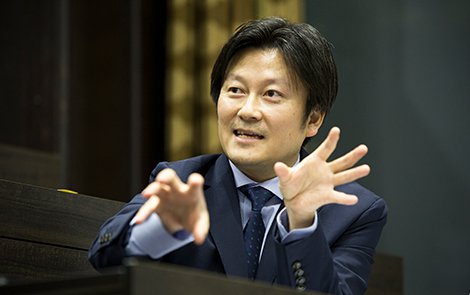
As ethics committees become more and more important, the administrative staff must aim higher to develop their skills. However, providing fundamental education would be difficult with the current budget structure. Therefore, it is important to develop human resources with a bottom-up approach by providing OJT at various institutions, which also gives workers the opportunity for job rotation.
Yamamoto:
We take staff training at our university seriously. We send them to conferences, encourage them to get certifications and urge them to attend any workshop that is held anywhere in the world, however far away it may be from Japan (laughs).
Uetake:
I can see how that can increase the staff’s motivation.
7.Possibilities of Partnerships
Uetake:
Next, I’d like to discuss the sharing of documentation, such as contracts and applications.
We at the University of Tokyo actually do not have our own method and are even okay with utilizing a system developed by Osaka University. What is it like at other institutions?
Yamamoto:
We share the basic system for electronic filing of clinical trial applications with other places but the process in which the medical and administrative staff review and respond to the actual applications is different. Therefore, we have started to slowly customize it so that it becomes easier to share with other institutions. The basis is the same so I think there is so much potential for sharing information.
Uetake:
I agree. Coming up with a standard format for applications is probably not that hard to do. What do you think, Dr. Iwae?
Iwae:
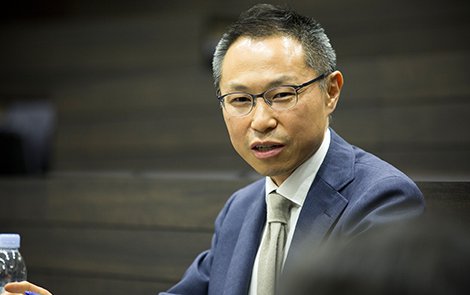
We actually take a fairly customized approach. For example, the data is entered in the system according to subcategories and attributes of the research to make it easier to conduct searches later on. Clinical research extends over a variety of areas so coming up with a universal format may be rather difficult.
Furthermore, with the enactment of the Clinical Research Law* this year (2017) in April, there is the possibility that joint research would become difficult or cannot be carried out smoothly unless we standardize the applications, protocols and informed consent forms. In my opinion, compared to independent clinical research, the administrative offices at each institution are given less discretion in collaborative research.
*Clinical Research Law: Legal regulation of clinical trial enacted in response to the series of scientific misconduct, including what is known as the “Diovan Trial.” The objective was to prevent tampering and recover the public’s trust in clinical research.
Yamamoto:
I agree with you. Under the Clinical Research Law, I think it will be relatively easy to use a standardized form, just like it is with the format for clinical trials.
Iwae:
This is something that needs to be addressed right away! Aiming for standardization in, let’s say, a year would be too late. Each institution may have already come up with its own customized format, making it impossible to work toward standardization.
Uetake:
If we’re going to do it, we need to do it now.
Iwae:
However, unfortunately there is no place where we can discuss governance issues like that.
Yamamoto:
I agree. Japan doesn’t have an organization equivalent to PRIM&R. I strongly think that is the issue with the field of medical research in Japan.
──At this point, coordinator Uetake turns to Takuya Watanabe, staff member from the Office for Human Research Studies at the University of Tokyo.
Uetake:
Mr. Watanabe, since you are here as an observer, do you have anything to add?
Watanabe:
Yes. I do believe research ethics specialists can help contribute to the sound operation of research. However, it is difficult to see how the job is instrumental to the development of research. How can research ethics specialists maintain their motivation?
Yamamoto:
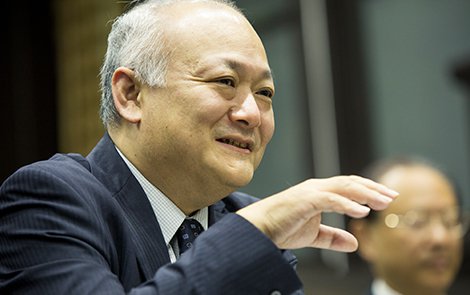
The work by the research ethic specialists may seem like it slows down the progress of research, but their efforts play an integral role in preventing inferior research from making it out into the world. The supportive work is extremely important in that sense.
The research ethic specialists around the world work with great pride. As for organizations in Taiwan and South Korea, there is always someone that flies to the U.S. to attend workshops at PRIM&R once a year. I wish Japanese counterparts also had that much freedom in brushing up their skills.
We have our administrative staff at Osaka University take courses at PRIM&R and also encourage them to attend academic conferences. We make it a requirement for them to present research papers at conferences. I think that makes a good practice, and in turn, leads to raising their level of motivation.
Watanabe:
Also, there are times when I wonder if I’m doing okay or wonder how the work is done at other institutions. In other words, I think I’m looking for a way to exchange information with those in the same line of work, but it’s hard to find places that allow for such exchange….
Yamamoto:
At Osaka University, we have been actively visiting progressive institutions together with office staff for the last 10 years. Of course, that provides the perfect place for information exchange.
Uetake:
Osaka University is very progressive.
Yamamoto:
This may be a surprise to you all, but many people have told us that they had never thought that a place like Osaka University would become the center of clinical research. This is understandable as the institution used to be focused on basic research and it didn’t have the platform for such potential. However, the chief of the research department and the hospital director back then saw the future in clinical research and helped finalize the budget to set up the structure for it. We were very lucky.
Akabayashi:
I think the doctors at Osaka University had a good vision.
8.Summary
Uetake:
We are running out of time, so I’d like each of you to give a comment to wrap up the discussion. Let’s start with you, Dr. Yamamoto.
Yamamoto:
Okay. I think the structure for clinical research in Japan has become well-organized compared to how things were in the past in terms of its position in the international market. The situation will probably improve further if the system allows for more of a site-driven approach that picks up the voices of those working on the frontlines. It is important that we do not depend heavily on the governmentalthough we do need their support for guidance and fundingand build an infrastructure that encourages the initiation at the site level.
Uetake:
Thank you very much.
How about you, Dr. Iwae?
Iwae:
I have a similar opinion. I believe it is necessary to encourage the involvement of support staff at least in policy formation pertaining to clinical research. We must take action to raise issues by creating a forum for discussion beforehand, instead of just sending in a councilor to develop policies.
Uetake:
Dr. Akabayashi, what do you have to add?
Akabayashi:
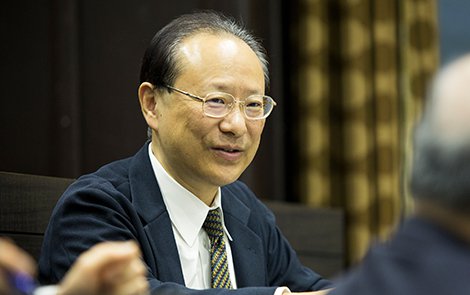
The discussion today helped us realize that there is so much to prepare in order to proceed with a system for central research ethics committees in Japan. We are not in a place where a single leap would take us to a happy place.
For example, I’ve heard that Europe has a myriad of problems even with the existence of central research ethics committees. As mentioned earlier, a non-profit is utilized in the U.S. I think Japan should proceed with setting up a central research ethics committee system while pursuing its own methodology that draws on the system in the U.S. In doing so, I believe it is crucial to take a site-driven, bottom-up approach. Continuing with our efforts while keeping these two key phrases in mind will hopefully help improve the system in the near future.
Uetake:
I see. Let’s continue to do our best for the research integrity in the future.
Thank you very much everyone.
一同
Thank you very much.


In Japan, there are somewhere between 2,000 and 3,000 ethics committees. This number is twice as many as in the U.S., seven to eight times more than in South Korea and roughly 40 times more than in France. The overwhelming number of committees in the country has already posed some problems, as seen in the inconsistency in the quality of review and the complexity of the review procedures.
The Japanese government has recognized the need to mitigate the situation, and to seek quality improvement, standardization and centralization. This is why the Certified Ethics Committee System was established in 2014. Today, there are 42 certified ethics committees in Japan. Although this number may seem quite satisfactory, the situation is still far from ideal.
Today, we will have doctors active in the field of research ethics in Japan discuss the significance of central ethics committees, which may hold the key to the future of research ethics.